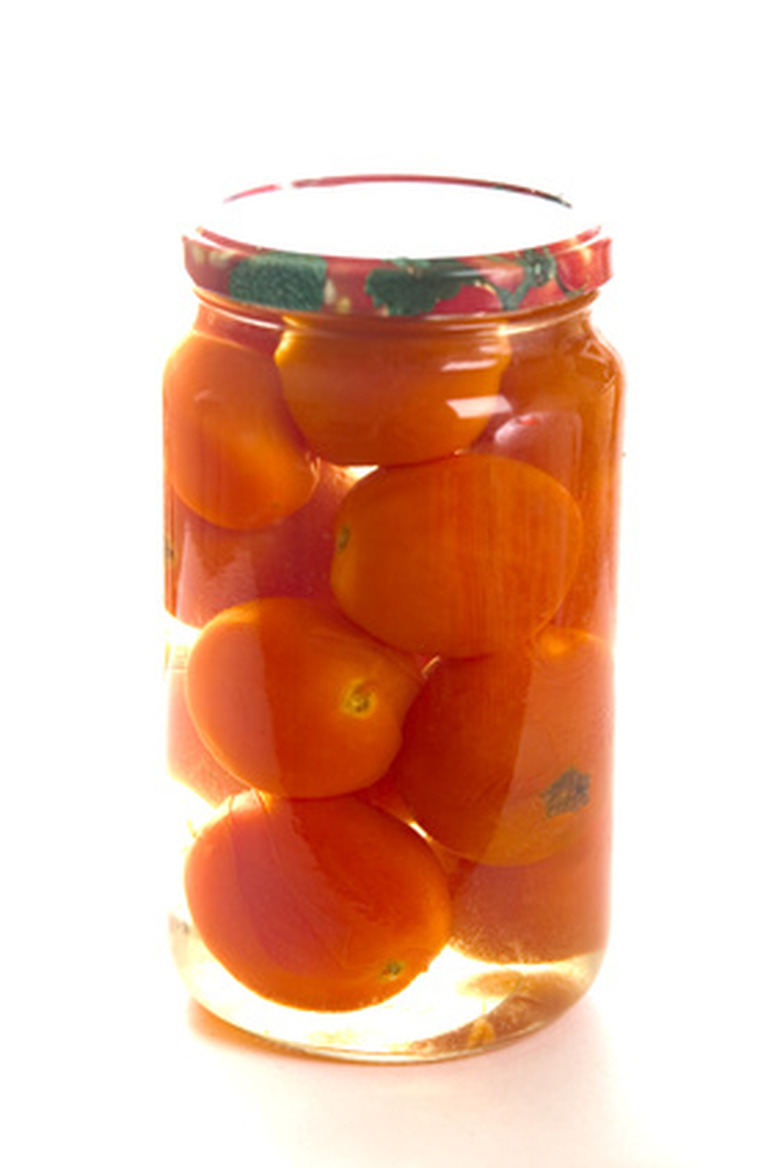How To Prepare Acetate Buffers
Many important reactions in chemistry and biochemistry are pH-dependent, meaning that the pH of the solution can play an important role in determining whether and how rapidly a reaction takes place. Consequently, buffers—solutions that help keep the pH stable—are important for running many experiments. Sodium acetate is a weakly basic salt and the conjugate base of acetic acid, or vinegar. A mixture of sodium acetate and acetic acid makes a good buffer for weakly acidic solutions. A few different ways exist to prepare an acetate buffer, but one method in particular is straightforward and relatively safe.
Step 1
Determine how much buffer you need and what molarity you need for your buffer. The molarity of the buffer is the number of moles of solute, or substance dissolved in solvent, divided by the total volume of the solution. Sodium acetate will dissociate into sodium ions and acetate ions when it dissolves in water. Consequently, the molarity of the acetate plus the molarity of the acetic acid is the total molarity of the buffer. The molarity you'll need depends on the kind of experiment you're trying to perform and will vary for different experiments. The amount of buffer you need will vary as well, so check with your instructor or check the protocol to see what you need.
Step 2
Determine the ratio of acetic acid concentration to acetate concentration using the Henderson-Hasselbalch equation, pH = pKa + log (acetate concentration/acetic acid concentration). The pKa of acetic acid is 4.77, while the pH you need will vary depending on your experiment. Since you know both pH and pKa, you can plug these values in to find the ratio of the concentrations. For example, assuming that you need a pH of 4, you could write the equation as 4 = 4.77 + log (acetate/acetic acid) or -0.77 = log (acetate/acetic acid). Since log base 10 of x = y can be rewritten as 10 to the y = x, acetate/acetic acid = 0.169.
Step 3
Use the ratio of the concentrations and the buffer molarity to find the molarity you need of each chemical. Since molarity of acetate + molarity of acetic acid = buffer molarity, and since you know the ratio of acetate to acetic acid from Step 2, you can substitute this value into the buffer molarity equation to find the molarity of each component. For example, if the ratio of the concentrations is 0.169, 0.169 = acetate/acetic acid, so (0.169) x acetic acid concentration = acetate concentration. Substitute (0.169) x acetic acid concentration for acetate concentration in the buffer molarity equation and you have 1.169 x acetic acid concentration = buffer molarity. Since you know the buffer molarity, you can solve this problem to find acetic acid concentration, then solve for acetate concentration.
Step 4
Calculate how much acetic acid and sodium acetate you need to add. Remember that when you're diluting a substance, M1 x V1 = M2 x V2, meaning that the original volume times the original molarity = the final volume times the final molarity. In Step 3, you found the molarity of acetic acid that you need, so you have M2. You know how much buffer you need, so you have V2. You know the molarity of the acetic acid (1 M), so you have M1. You can use these numbers to solve for V1, the amount of acetic acid solution you should add, then do the same for the sodium acetate, which is also a 1 M solution.
Step 5
Using the graduated cylinder, measure out the volume of sodium acetate you calculated in Step 4 and add it to the beaker. Do the same for the acetic acid. Now add enough water to bring the total volume of the solution up to the total buffer amount you need (the V2 amount from Step 4).
Step 6
Stir or gently swirl the solution to ensure it's well-mixed. Test the pH with your pH meter to ensure you have the right pH for your experiment.
Things Needed
- 1 molar solution of acetic acid
- 1 molar solution of sodium acetate
- Paper
- Calculator
- Pencil
- Beaker
- Calibrated pH meter
- Graduated cylinder
TL;DR (Too Long; Didn't Read)
Another way to make an acetate buffer is by adding sodium hydroxide to an acetic acid solution until you reach the desired pH. Sodium hydroxide is a strong base and therefore more dangerous to work with, however, so the above procedure is preferable.
Warning
Vinegar and sodium acetate are eye irritants and mild skin irritants. Do not bring either in contact with eyes or skin.
References
- "Chemical Principles, the Quest for Insight, 4th Edition"; Peter Atkins, Loretta Jones; 2008.
- Sonoma State University: Department of Biology Animal Physiology — Preparation of Buffers
Cite This Article
MLA
Brennan, John. "How To Prepare Acetate Buffers" sciencing.com, https://www.sciencing.com/prepare-acetate-buffers-7197677/. 24 April 2017.
APA
Brennan, John. (2017, April 24). How To Prepare Acetate Buffers. sciencing.com. Retrieved from https://www.sciencing.com/prepare-acetate-buffers-7197677/
Chicago
Brennan, John. How To Prepare Acetate Buffers last modified March 24, 2022. https://www.sciencing.com/prepare-acetate-buffers-7197677/
